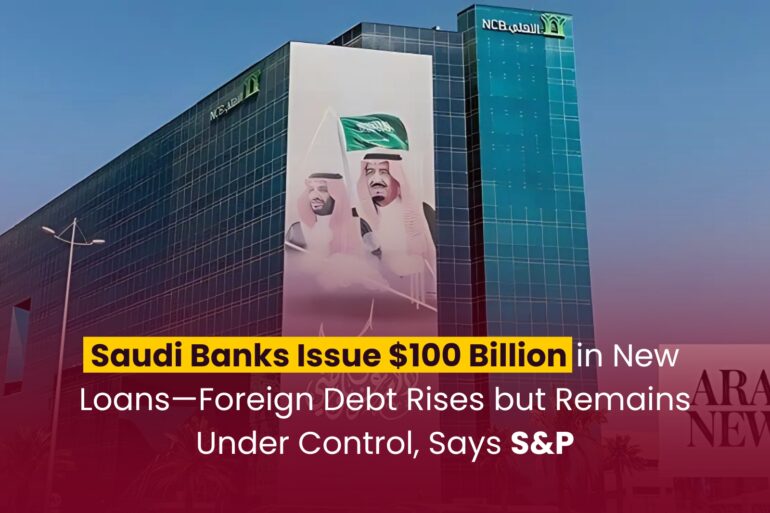In 2024, Saudi banks disbursed a record $99.2 billion (SAR 371.8 billion) in new loans, outpacing the $58.4 billion (SAR 218.9 billion) received in deposits. This left a funding gap of over $40.7 billion, prompting banks to increasingly turn to foreign borrowing.
Foreign Debt Filling the Gap
Despite the rise in external borrowing, S&P Global maintains that Saudi banks remain financially stable. As of late 2024, total net foreign debt stood at a modest $9.1 billion (SAR 34 billion). Even as borrowing increases, S&P projects that foreign debt will account for just 4.1% of total lending by 2028—a relatively safe threshold.
This shift is driven by Vision 2030, the Kingdom’s ambitious transformation plan, which has led to a rise in business lending while home loan demand has slowed since 2022.
Sources and Structure of Borrowing
Saudi banks are covering the local funding shortfall by tapping global markets, mainly through:
- Interbank loans
- Short-term repo agreements (making up 55% of foreign debt growth in 2024)
- Debt issuance via international branches
By end of 2024, 59% of foreign debt was owed to international banks. While this reliance brings some liquidity risk, S&P points out:
- Gulf-based lenders supply nearly half of foreign deposits—regions known for high liquidity
- Some debts are collateral-backed, reducing default risk
Rising Reliance on Global Capital
A notable decline in Saudi banks’ net position with foreign banks—from 109% in 2022 to 54% in 2024—signals growing dependence on external funding. While this isn’t alarming yet, it warrants close monitoring, especially in volatile markets.
Lessons from Qatar? Not Quite
Some analysts draw parallels with Qatar’s foreign debt spike before the 2022 FIFA World Cup. Qatar’s foreign liabilities rose from 5.3% in 2014 to over 40% by 2021, resulting in financial instability during the 2017 Gulf diplomatic crisis, which forced the government to inject $40 billion.
However, Saudi Arabia’s current foreign debt—$109.5 billion—is far more manageable, especially given that its banking sector is nearly double the size of Qatar’s. Strong government support, conservative fiscal policies, and lower overall exposure to foreign liabilities make a Qatar-style crisis unlikely.
Outlook: Growth With Caution
Saudi Arabia’s push for economic diversification continues to create high funding demand, especially for infrastructure and private sector growth. While foreign borrowing will likely rise, S&P affirms that strong regulatory oversight and Gulf cooperation will help keep risks contained—provided banks remain vigilant.

